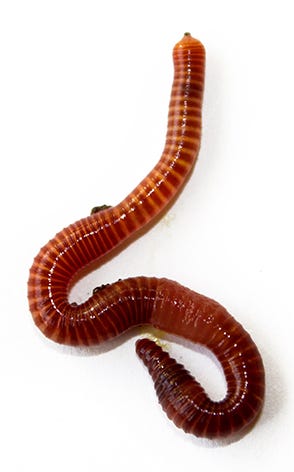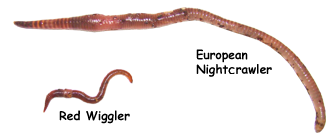Purchase Red Wiggler Worms Online - Convenient and Fast Shipping
Purchase Red Wiggler Worms Online - Convenient and Fast Shipping
Blog Article
Maximizing the Perks of Red Wiggler Worms: A Comprehensive Handbook for Home Gardeners and Urban Farmers
In the world of lasting horticulture practices, red wiggler worms stand as unrecognized heroes, quietly transforming natural waste right into nutrient-rich castings that can work marvels for dirt health. As home gardeners and city farmers progressively seek eco-friendly and cost-effective means to boost their gardens, the potential benefits of harnessing the power of red wigglers can not be overemphasized. From minimizing kitchen area waste to cultivating healthier plants, the usage of these humble creatures offers a huge selection of advantages. By checking out the complexities of exactly how to efficiently care for and optimize the benefits of red wiggler worms, people can open a riches of opportunities for boosting the sustainability and productivity of their horticulture undertakings.
Understanding Red Wiggler Worms
Red Wiggler worms, renowned for their reliable composting capabilities, are a types of earthworms extensively made use of in vermiculture techniques. These worms, scientifically understood as Eisenia fetida, grow in decomposing natural material, making them suitable prospects for composting.
One secret quality of Red Wiggler worms is their reproductive price. These hermaphroditic animals have both male and women reproductive organs, enabling them to replicate swiftly under beneficial problems. A fully grown Red Wiggler can produce several children in a brief duration, guaranteeing a consistent populace within a composting system.

Setting Up a Worm Container
When developing a worm bin for vermiculture functions, proper preparation and attention to information are important for producing a helpful setting for Red Wiggler worms. Begin by picking a suitable container for your worm container. This can be a plastic or wooden container with a lid to maintain moisture degrees and safeguard the worms from light. Guarantee that the container has drainage holes near the bottom to stop waterlogging.

Place the worm container in an awesome, dark location away from direct sunshine and extreme temperatures. Regularly keep an eye on the moisture levels, adding water if the bedding really feels flaky or dry. Feed the worms a balanced diet regimen of fruit and vegetable scraps, staying clear of citrus fruits, onions, and spicy foods. By adhering to these actions, you can establish up a thriving worm container that will efficiently process natural waste right into nutrient-rich vermicompost for your garden.
Feeding and Keeping Worms
Making certain a nourishing and balanced diet is essential for the health and wellness and efficiency of Red Wiggler worms in a vermiculture system. It is crucial to stay Home Page clear of feeding them citrus fruits, onions, garlic, milk items, meat, and oily foods as these can be unsafe to the worms or create undesirable smells in the container.
Correct dampness degrees are additionally essential for the health of Red Wiggler worms. The bedding must really feel like a moist sponge, supplying adequate dampness for the worms to take a breath with their skin. Regularly examine the dampness degrees and change by adding water or dry bedding material as needed. Additionally, maintaining correct temperature level problems in between 55-77 ° F(13-25 ° C )will certainly make sure ideal worm activity and reproduction. By faithfully checking their diet plan, moisture, and environmental problems, home garden enthusiasts and metropolitan farmers can sustain a effective and healthy Red Wiggler worm population for composting objectives.
Harvesting Worm Spreadings
To successfully extract nutrient-rich worm castings from the vermicompost, a systematic harvesting procedure is essential for making best use of the composting advantages. The first action in collecting worm castings is to encourage the worms to migrate to one side of the container.
After the spreadings have actually been harvested, it is crucial to divide any continuing to be worms from the spreadings to stay clear of harming them throughout storage or application. One reliable approach is to develop conical piles of castings under intense light. Worms will naturally relocate away from the light, enabling simple splitting up and elimination.
Last but not least, the Get the facts gathered worm castings need to be stored in a cool, dark, and completely dry location to preserve their top quality and efficiency as a nutrient-rich soil modification. By complying with these actions, home garden enthusiasts and city farmers can make best use of the benefits of red wiggler worms find out this here in their vermicomposting systems.
Making Use Of Worm Castings in Gardening
The incorporation of nutrient-rich worm spreadings right into garden dirt can significantly boost plant growth and total dirt wellness. Worm castings, likewise known as vermicast, are an all-natural plant food generated by red wiggler worms as they break down raw material. These spreadings are rich in vital nutrients like nitrogen, phosphorus, potassium, and useful microorganisms that advertise plant growth and boost dirt framework.
When utilizing worm spreadings in horticulture, it is essential to mix them thoroughly right into the dirt or utilize them as a top dressing around plants. The slow-release nature of worm castings ensures a stable supply of nutrients to plants over time, decreasing the risk of nutrient leaching and promoting long-term dirt fertility. Furthermore, worm castings assist enhance dirt aeration, water retention, and microbial activity, developing a healthy setting for plant roots to prosper.

Final Thought
To conclude, the application of red wiggler worms in home horticulture and urban farming can considerably benefit dirt wellness and plant development. By understanding exactly how to establish and preserve a worm container, feed the worms effectively, and collect their nutrient-rich castings, garden enthusiasts can make the most of the advantages of these earthworms. Including worm castings into gardening methods can improve dirt fertility and total plant efficiency. Generally, red wiggler worms use a lasting and reliable solution for improving garden and ranch yields.
In the realm of sustainable horticulture techniques, red wiggler worms stand as unsung heroes, quietly changing natural waste right into nutrient-rich spreadings that can work wonders for dirt wellness.When establishing a worm bin for vermiculture objectives, proper prep work and attention to information are important for producing a favorable setting for Red Wiggler worms. The first step in harvesting worm spreadings is to urge the worms to migrate to one side of the container. Worm spreadings, additionally recognized as vermicast, are a natural plant food produced by red wiggler worms as they break down natural issue. By understanding how to establish up and keep a worm bin, feed the worms appropriately, and gather their nutrient-rich castings, garden enthusiasts can make best use of the benefits of these earthworms.
Report this page